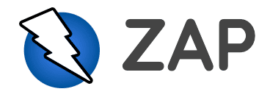Author

Blogs
Article & Observations About Diverse Teams Working Better Together
Top 10 Manual Testing Tools for Your Team

Manual testing is an essential part of software development. It involves executing a program or application with the intent of finding errors and verifying that it meets the requirements specified by the customer. As one of the oldest forms of quality assurance in software, manual testing has been around since computers were first developed. Today, manual testers have access to sophisticated tools and techniques that can help them find issues quickly and accurately.
So if you’re looking for reliable manual testing tools, this is the article for you! Read on to find out more.
Best Manual Testing Tools for Finding Vulnerabilities
#1 Selenium
#2 Jmeter
#3 Bugzilla
#4 TestLink
#5 Jira
#6 LoadRunner
#7 Mantis
#8 ALM
#9 ZAP
#10 UFT
#1 Selenium

Supported Platforms: Windows, Linux, and macOS
Price: Free
Selenium is one of the most popular manual testing tools out there. It's an open-source suite of software that allows you to automate tests for web applications, written in any language. Selenium supports multiple browsers and operating systems, making it a great choice for cross-platform testing. It also has great support for continuous integration and DevOps, allowing you to quickly and easily automate your testing. Selenium also supports integration with other popular tools, such as Jenkins and Docker.
Features of Selenium:
- Cross-browser Testing: Selenium can be used to automate tests across multiple browsers, including Internet Explorer, Firefox, Chrome, and Safari. Additionally, it supports mobile platforms such as iOS, Android, and Windows Phone.
- Cross-Platform Support: Selenium can also be used to automate tests on different operating systems such as Windows, Mac OSX, and Linux.
- Scalability: Selenium can be used to create automated tests that scale to thousands of users, ensuring that the application being tested is able to handle high traffic levels.
- Compatibility with Different Programming Languages: Selenium supports different programming languages such as Java, C++, Python, Ruby, PHP, and Perl. This makes it easier for developers to create automated tests without having to learn different programming languages.
- Easy Integration with Continuous Integration and Testing Tools: Selenium can be integrated with continuous integration and testing tools such as Jenkins, Bamboo, and TeamCity, allowing teams to automate their software development processes.
- Flexible and Extensible: Selenium can be used to create highly customized tests, allowing developers and testers to tailor their automated tests according to the specific needs of their applications. Additionally, its APIs can be used to extend its capabilities even further.
With so many features and capabilities, it’s easy to see why Selenium is one of the most popular manual testing tools on the market today.
#2 JMeter

Supported Platforms: Windows, Linux, and macOS
Price: Free
JMeter is a powerful open-source testing tool for performance and load-testing web applications. It’s designed to help developers and testers quickly identify potential bottlenecks in their applications, by simulating real user scenarios. It supports multiple protocols including HTTP, HTTPS, JDBC, LDAP, SOAP, and FTP.
Features of JMeter:
- Easy-to-use GUI: JMeter has an easy-to-use graphical user interface (GUI) which makes it simple to create test plans and run tests with just a few clicks. This simplifies the process of setting up performance tests for web applications.
- Extensible: The JMeter API can be used to extend its features and add custom components, allowing developers and testers to customize their tests according to the specific requirements of their applications.
- Protocol Support: JMeter supports various protocols such as HTTP, HTTPS, JDBC, LDAP, SOAP, and FTP, making it easy to test applications that use different protocols.
- Multi-Threading: JMeter supports multi-threading, allowing developers and testers to simulate thousands of simultaneous users on the application being tested. This ensures that the application can handle high traffic levels.
- Reporting and Analysis: JMeter provides detailed reports that allow developers and testers to analyze the performance of their applications and identify potential bottlenecks.
By providing powerful features, great flexibility, and detailed reports, JMeter is an invaluable tool for load-testing web applications. It’s no wonder why it’s one of the most popular open-source testing tools on the market today.
#3 Bugzilla

Supported Platforms: Windows, Linux, and macOS
Price: Free
Bugzilla is an open-source bug-tracking system used by software developers and managers to track, manage, and report bugs. It provides a powerful web-based interface that makes it easy for users to enter bugs, assign them to other users, and keep track of their progress.
Features of Bugzilla:
- Web-Based Interface: Bugzilla has an intuitive and easy-to-use web-based user interface which makes it simple for users to enter, manage, and report on bugs.
- Detailed Tracking: Bugzilla provides detailed bug tracking features such as assigning priority levels, setting deadlines for bug resolution, adding comments, and attaching files to individual bugs.
- Notifications and Alerts: Bugzilla can be configured to send notifications and alerts to users when a bug is created, changed, or resolved. This makes it easy for teams to keep on top of the progress of their bug resolution efforts.
- Security: Bugzilla provides robust security features that allow users to control who can access and modify bug reports.
- Extensible: Bugzilla’s API can be used to extend its features and customize them according to the specific needs of an organization or project.
Bugzilla is a proven and effective resource for overseeing, managing, and monitoring bug issues in software progress. It's easy to see why it’s the most popular defect-tracking tool available currently! With its user-friendly capabilities and powerful components, Bugzilla is an ideal choice for keeping on top of your software development projects.
#4 TestLink

Supported Platforms: Windows and Cloud
Price: Free
TestLink is a web-based test management tool used to plan, manage, and report on software testing projects. It provides a powerful web-based interface that makes it easy for users to create tests, assign them to other users, and keep track of their progress.
Features of TestLink:
- Test case management: TestLink provides an intuitive test case management with a simple web-based interface that enables users to create, modify, and delete tests. It also allows testers to assign tests to other users and keep track of their progress.
- Requirement mapping: TestLink makes it easy to map requirements to test cases, helping to ensure that all tests are relevant and up-to-date.
- Test execution: TestLink allows users to execute tests through a web-based interface, making it easy to track progress as well as report any issues or successes.
- Integrations: TestLink can be easily integrated with other systems like defect tracking and continuous integration tools, providing a more comprehensive view of the testing process.
- Reporting: TestLink provides detailed reports that are easy to interpret and share with stakeholders, helping teams make better decisions about software development projects.
Overall, TestLink is an intuitive test management tool designed to help teams plan, manage, and report on software testing projects. With its integrations with other systems like defect tracking and continuous integration tools, TestLink is an all-in-one solution for software testing teams.
#5 Jira

Supported Platforms: Windows, Linux, and macOS
Price: Free plan, and paid plans starting at 77,50$/month
Jira is an issue-tracking and project-management tool used by software development teams. It provides users with a simple, web-based interface to track tasks, bugs, and other issues related to their projects. It also enables teams to collaborate on projects in real time and create detailed reports for stakeholders.
Features of Jira:
- Name and categorize tasks: Jira lets users easily name and categorize tasks, bugs, or other issues related to their projects. This helps teams stay organized and keep track of the progress of their projects.
- Prioritizing tasks: Jira enables users to prioritize different tasks within a project, giving teams an easy way to manage workloads and focus on the most important tasks.
- Real-Time Collaboration: Jira’s real-time collaboration feature allows users to discuss tasks, share ideas, and solve problems together in one place.
- Reporting: Jira provides detailed reports that can be easily shared with stakeholders, helping teams make better decisions about their projects.
- Integrations: Jira can be easily integrated with other systems like version control and continuous integration tools, providing a more comprehensive view of the project development process.
Boasting intuitive issue-tracking and project management capabilities, Jira is designed to empower software development teams with a comprehensive solution for tracking tasks, bugs, and more. Furthermore, its integrations with other systems such as version control and continuous integration tools make it an unparalleled all-inclusive toolset that no team should have to function without!
Related Resources: Top Mobile Application Testing Tools
#6 LoadRunner

Supported Platforms: Windows, Linux, and macOS
Price: Community Edition is Free to Download, Paid plans
LoadRunner is a performance testing tool used to identify the maximum workload capacity of an application. It enables teams to simulate real-world user scenarios and test system behaviors under extreme load conditions.
Features of LoadRunner:
- Simulate real-life user scenarios: LoadRunner enables users to simulate real-life user scenarios, helping teams gain insight into how their applications will behave under extreme loads.
- Test system behavior: LoadRunner helps teams test the system's behaviors and performance, giving them an understanding of how their application will perform in production.
- Analyze results: LoadRunner provides detailed reports that can be analyzed to identify areas of improvement and understand the application’s maximum workload capacity.
- Integrations: LoadRunner can be easily integrated with other systems such as version control and continuous integration tools, providing a more comprehensive view of the testing process.
- Customizable tests: LoadRunner provides users with customizable test scripts that can be used to simulate a variety of user scenarios.
LoadRunner is the go-to performance testing tool for software development teams. With its ability to simulate real-world user scenarios and test system behaviors, LoadRunner enables teams to quickly identify areas of improvement and understand their application’s maximum workload capacity. Additionally, its integration with other systems such as version control and continuous integration tools make it an invaluable tool for any team looking to optimize their application’s performance.
We compared the features of JMeter vs LoadRunner in this article so that you can choose which performance testing tool is right for you.
#7 Mantis

Supported Platforms: Windows, Linux, and macOS
Price: Open Source Tool
Mantis is a web-based bug-tracking system that helps software development teams identify and manage issues in their projects. It enables users to track bugs and feature requests, prioritize tasks, and collaborate on projects in real time.
Features of Mantis:
- Issue tracking: Mantis enables users to easily track, manage, and prioritize bugs and feature requests in their projects.
- Real-time collaboration: Mantis provides real-time collaboration capabilities, allowing teams to work together on issues more effectively.
- Reporting: Mantis provides detailed reports that can be used to measure progress and identify areas of improvement.
- Customizable workflow: Mantis enables users to customize the workflow for their projects, allowing them to create a more efficient process for resolving issues.
- Integrations: Mantis can be easily integrated with other systems such as version control and continuous integration tools, providing an end-to-end solution for issue tracking and management.
Mantis is the perfect tool for software development teams looking to stay on top of issues in their projects. With its comprehensive issue-tracking capabilities, real-time collaboration features, customizable workflow options, and integrations with other systems, Mantis provides teams with a powerful solution for managing tasks and resolving issues quickly and efficiently. Whether teams are just getting started or already have an established workflow, Mantis is the perfect tool for streamlining and improving the issue resolution process.
#8 ALM

Supported Platforms: Windows, Linux, macOS, Solaris, AIX, etc.
Price: Paid
HP Application Lifecycle Management (ALM) is a comprehensive set of tools designed to streamline the development process. It enables teams to plan, develop, test, and deliver software projects more efficiently and effectively.
Features of ALM:
- Project Management: ALM provides users with an intuitive interface for managing projects, allowing them to easily track progress, assign tasks, and set deadlines.
- Requirement Tracking: ALM enables users to easily capture requirements and keep track of changes in real time.
- Test Automation: ALM provides tools for automating the testing process, allowing teams to quickly identify and address issues.
- Collaboration: ALM enables users to collaborate on projects in real time, improving communication and increasing efficiency.
- Integrations: ALM can be integrated with other systems such as version control and continuous integration tools, providing an end-to-end solution for software development.
HP ALM is an ideal solution for software development teams seeking to optimize their workflow and maximize productivity. ALM grants teams access to a complete suite of project management, requirement tracking, test automation, and collaboration tools that provide the ability to collaborate seamlessly and deliver high-quality products faster. ALM provides a comprehensive solution that can help teams optimize their processes and deliver better software faster.
#9 ZAP

Supported Platforms: Windows, macOS, and Linux
Price: Free to Download
ZAP (the Zed Attack Proxy) is an open-source web application security testing tool. It enables users to scan websites for vulnerabilities and identify potential security risks. ZAP provides users with an intuitive interface for finding and remedying security issues in their web applications, allowing them to protect their websites from malicious activity.
Features of ZAP:
- Vulnerability Scanning: ZAP provides detailed scans for finding potential vulnerabilities in web applications, such as SQL injection and cross-site scripting (XSS) attacks.
- Dynamic Analysis: ZAP enables users to perform dynamic testing, allowing them to observe how their web applications behave in real time.
- Penetration Testing: ZAP allows users to simulate realistic attacks and identify any potential security risks.
- Reporting: ZAP provides users with detailed reports for analyzing the results of scans and testing activities.
- Integrations: ZAP can be integrated with other systems, such as version control and continuous integration tools.
ZAP is the go-to tool for web application security testing. With its comprehensive suite of vulnerability scanning, dynamic analysis, and penetration testing features, users can easily find and solve any potential issues with their websites - from those just starting out to established workflows. ZAP provides a total solution that helps teams uncover vulnerabilities early on so they don't turn into major problems down the line. It's perfect for ensuring your web applications are secure!
#10 UFT

Supported Platforms: Windows
Price: Free Basic Plan, and paid plans
Unified Functional Testing (UFT) is an automated testing tool designed to help teams quickly and easily test their software applications. It enables users to create tests for any combination of technologies, such as web, mobile, desktop, and API. UFT provides users with an intuitive interface for creating and managing tests, allowing them to quickly and easily identify issues in their applications.
Features of UFT:
- Record & Playback: UFT enables users to create tests without writing any code by recording and playing back user actions.
- Test Automation: UFT provides tools for automating the testing process, allowing users to quickly and easily run tests over multiple platforms and technologies.
- Data-Driven Testing: UFT provides a data-driven testing feature that enables users to test their applications with different sets of data.
- Reporting: UFT provides users with detailed reporting for analyzing the results of tests, allowing them to identify areas for improvement.
- Integrations: UFT can be integrated with other tools, such as version control and defect tracking systems.
Unified Functional Testing (UFT) is the go-to automated testing tool for teams that are committed to enhancing the reliability and quality of their applications. With UFT, teams can efficiently test their software with ease and confidence - so you can rest assured knowing your application is up to par with industry standards.
Summary
In conclusion, there are a variety of manual testing tools available to help teams ensure their software applications are reliable and secure. From open-source options like Selenium and ZAP to commercial solutions like UFT, each tool provides different features to help teams optimize their processes and deliver better software faster. The right tool for your team depends on the scope of your project and the specific needs of your organization. With the multitude of manual testing tools available, teams can easily find a solution that works best for them.
FAQ
What is manual testing?
Manual testing is the process of testing software manually, without relying on automated tests. It involves creating and running test cases to identify any issues such as bugs or design flaws.
What are some of the benefits of using manual testing tools?
Manual testing tools provide teams with a range of benefits, including improved efficiency, faster testing cycles, and more detailed reporting. They also enable teams to quickly identify any issues in their software applications at an early stage.
How can I choose the right manual testing tool?
Choosing the right manual testing tool depends on the scope of your project and the specific needs of your organization. Consider features such as record & playback, test automation, data-driven testing, reporting, and integrations to find a tool that best meets your requirements.
Are there any free manual testing tools available?
Yes, there are some free manual testing tools available, such as Selenium and ZAP. These tools provide basic functionalities but may lack advanced features. Paid solutions such as UFT also offer more comprehensive functionality.
How can manual testing help me improve the quality of my software applications?
Manual testing helps teams identify any issues with their applications quickly and easily, allowing them to improve the quality and reliability of their software before it is released. This can help reduce costs associated with fixing bugs after release.
What other types of testing should I consider?
In addition to manual testing, teams may also want to consider automated testing, performance testing, security testing, and usability testing. Each type of testing provides teams with different insights that can help them improve the quality of their software applications.
Valuable Resources:
About the Author
David Willcox graduated with a Bachelor of Science from Tulsa University having double majored in Chemical Engineering and Mathematics. He earned his doctorate in Chemical Engineering from Northwestern University. He has a broad background in education, industry and software testing. David has written software for 40 years, starting with BASIC, which was originally stored on yellow punch tape. Since that time, David has expanded his skills and is proficient in Assembly Language, Pascal, C, Objective-C, Visual Basic, C#, LabVIEW.NET, Python, R, HTML and JAVA.

